Team 3: Alahji Barry, Elyse Cornwall, Kaitlin Peng, Anooshree Sengupta, Cecilia Wu
Solution Ideation
In studio 6A, we began ideating based on the results of our intervention study. We had two key takeaways from the study that drove the solutions we put onto stickies:
- People were confused about “priorities” which detracted from our results
- People did a good job writing down the positive outcomes of their decisions


We found that because our participants had interpreted “priorities” more as to-dos than guiding principles behind decision making, some of our solutions were more task-oriented and less about our topic, which was decision making. We regrouped and debated whether to pivot to a new topic – to-dos – or stick with decision making. Ultimately, we chose to stick with decision making because this domain felt less explored and more interesting to our team.
From here, we used half-pages to illustrate our favorite ideas. One teammate called these drawings “elevator pitches” for our solutions.


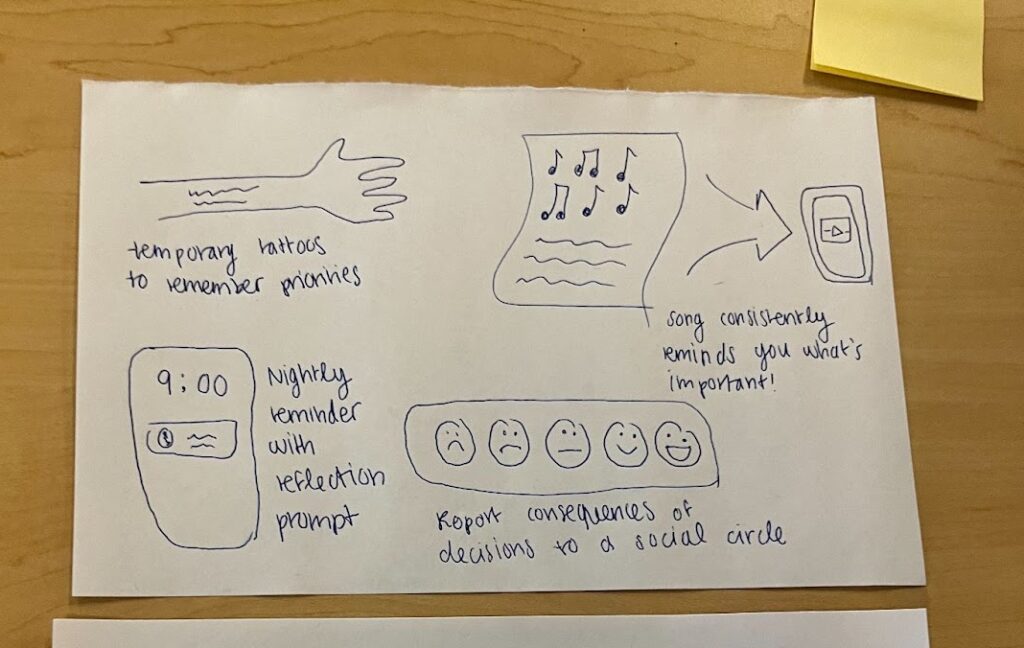


After this initial round, we shared out to the group. It seemed that two main categories were emerging: positive reflection (to minimize regret) and reminders (to keep priorities straight). We used more stickies to map the current state of our solutions:
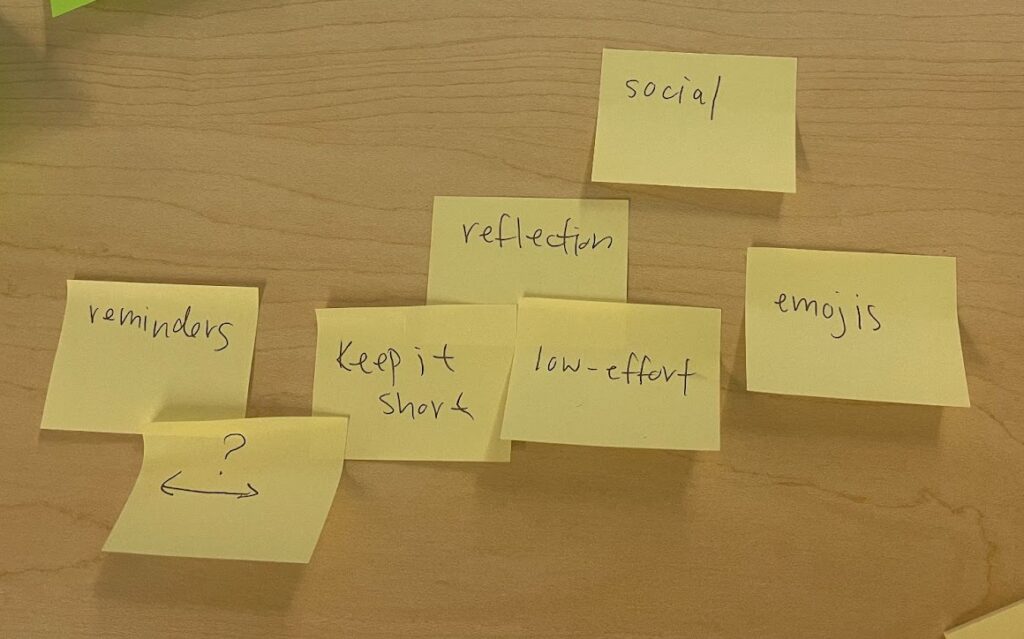
We felt stuck, and weren’t sure whether we could reconcile these different solutions, since they were targeting different parts of the decision making process. One teammate pointed out that since we were members of the target audience, we might consider which solution we’d prefer. Another team member added that reflection sounded tedious, at least if it was in the form of a written response, like we made our participants do in the intervention study. If we went down this path, how would we make reflection short, low-effort? Emojis?
In our final round of concept sketching, we seemed to hone focusing on positive outcomes, even as we brainstormed individually.


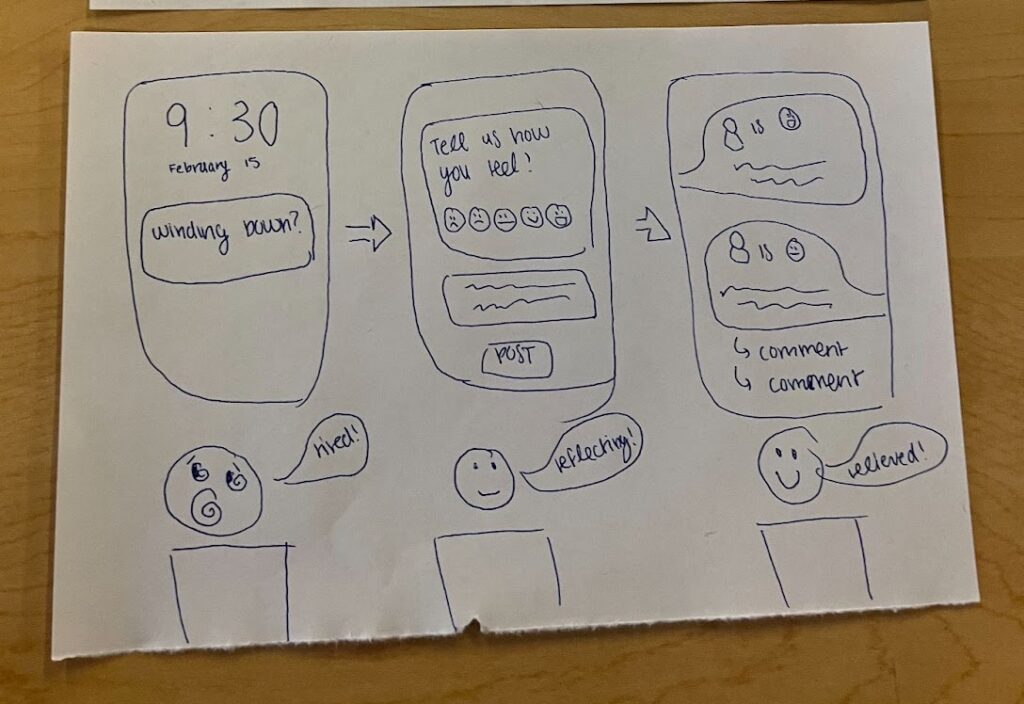
We ultimately chose to pursue an app that would allow users to positively reflect on their decisions, in hopes that this would minimize their regret. We felt that this decision most directly derived from our data, and offered a new lens on decision making in general.
Mapping
Feasible, Desirable, & Viable
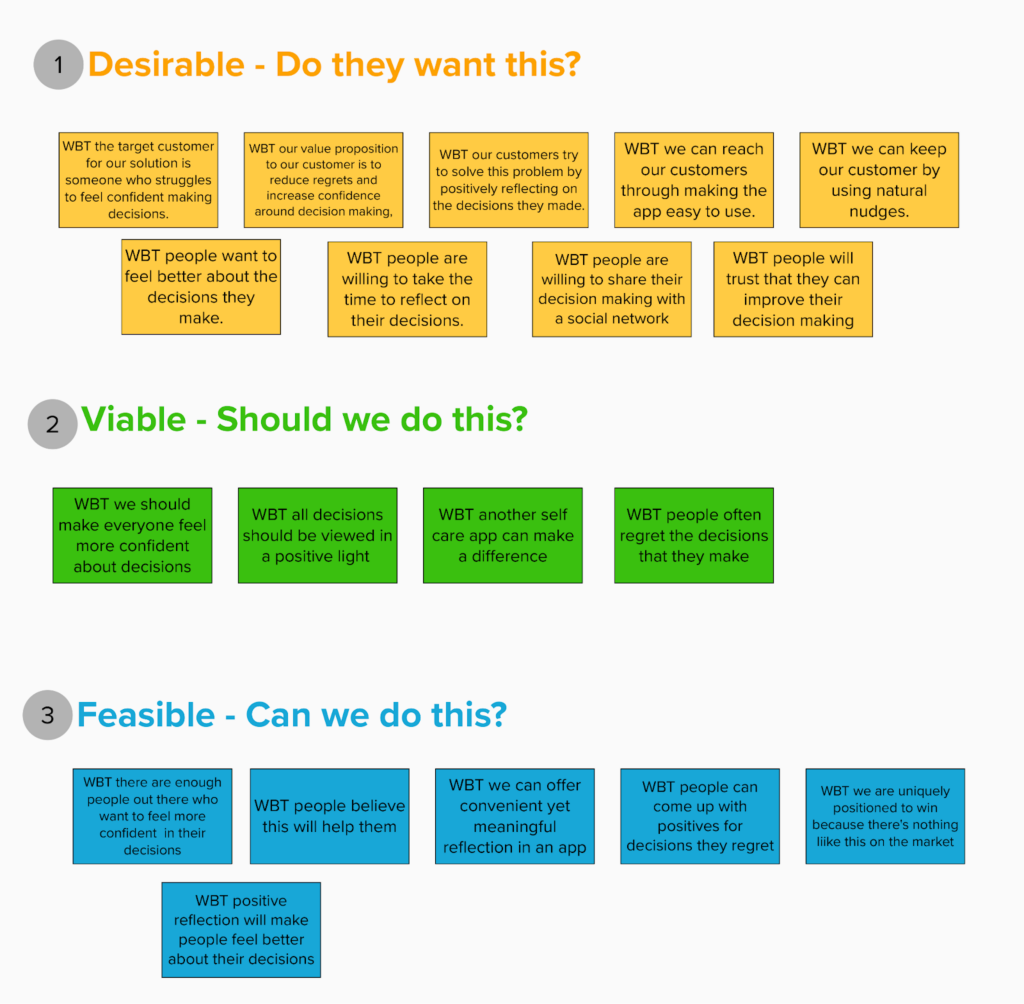
Assumption Map
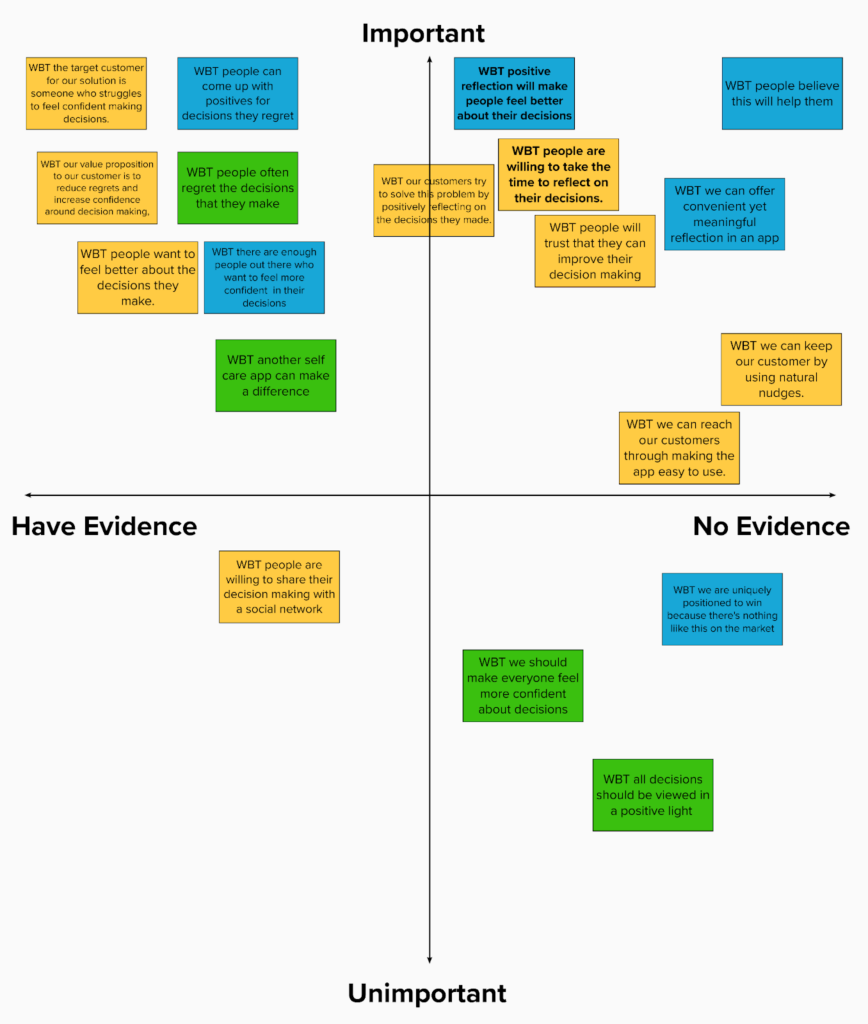
Most important assumptions shown in bold:
- WBT people are willing to take time to reflect on their decisions.
- WBT positive reflection will make people feel better about their decisions.
Testing Assumptions


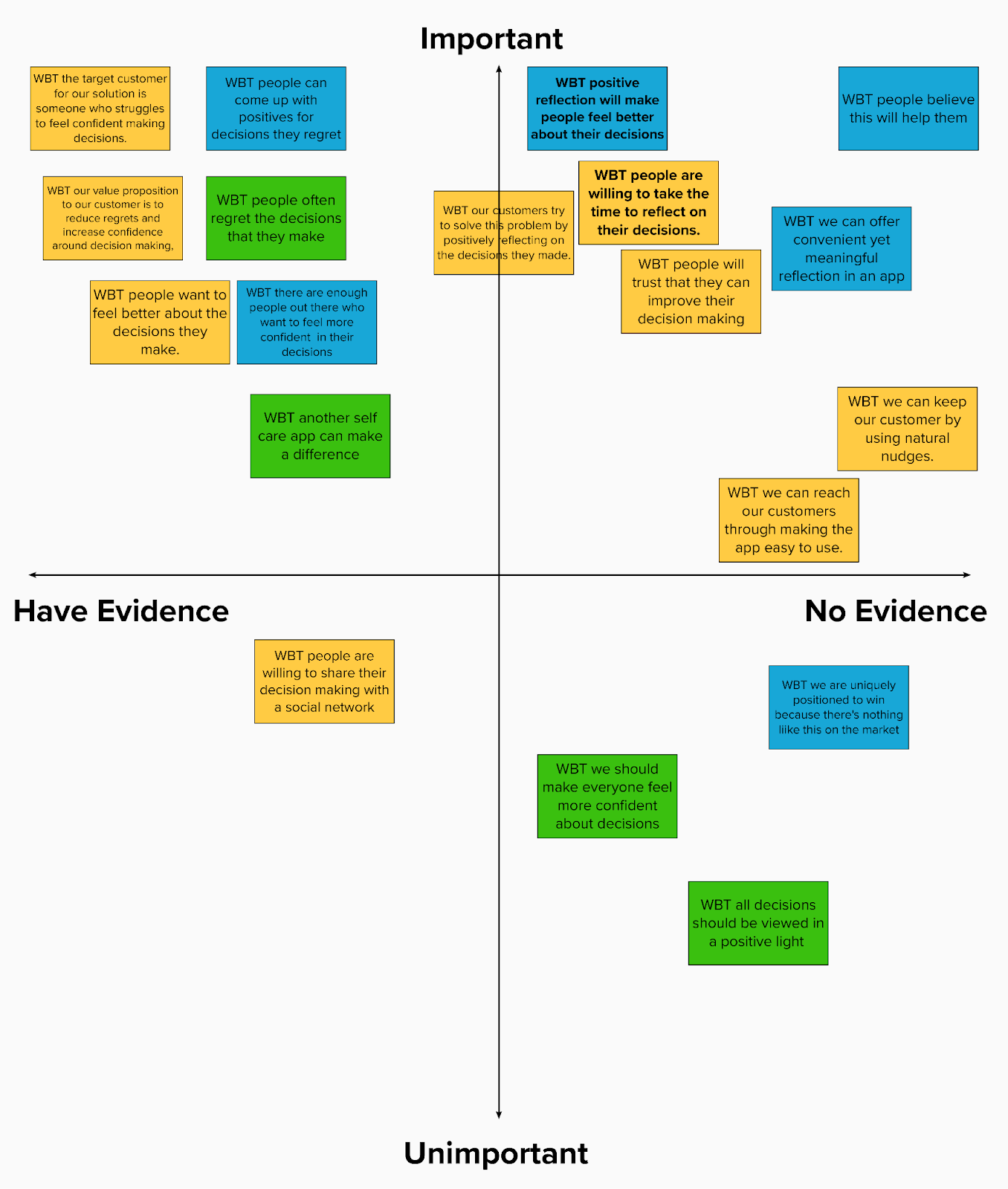



Comments
Comments are closed.